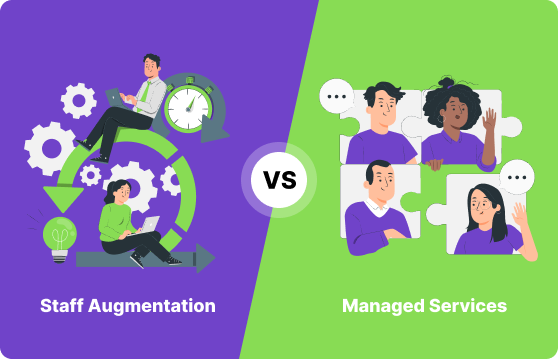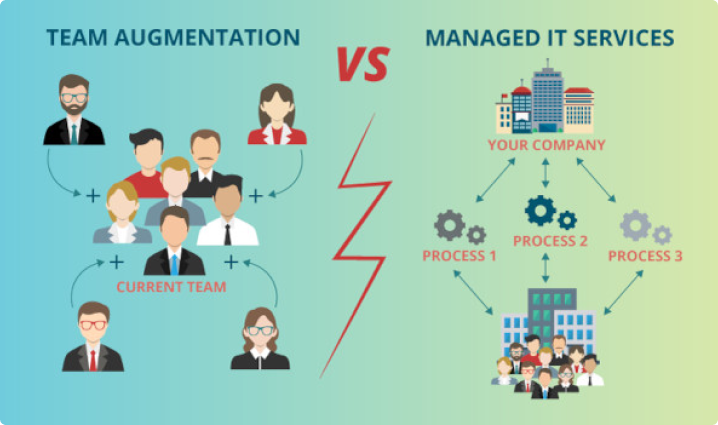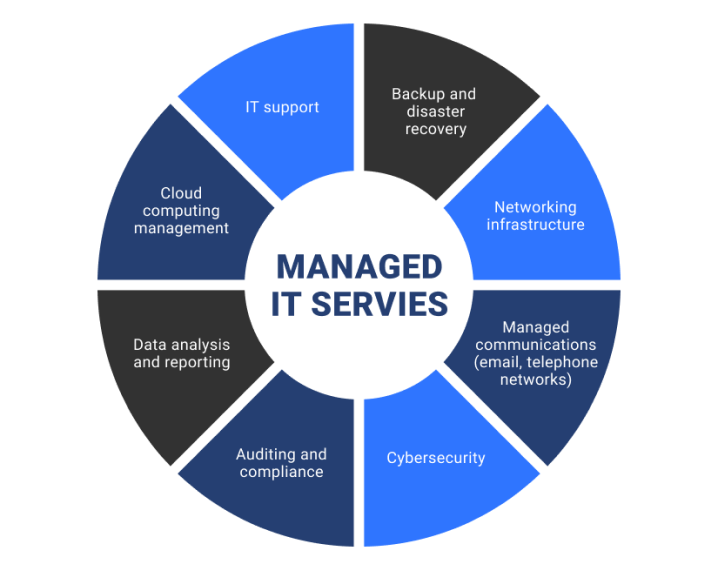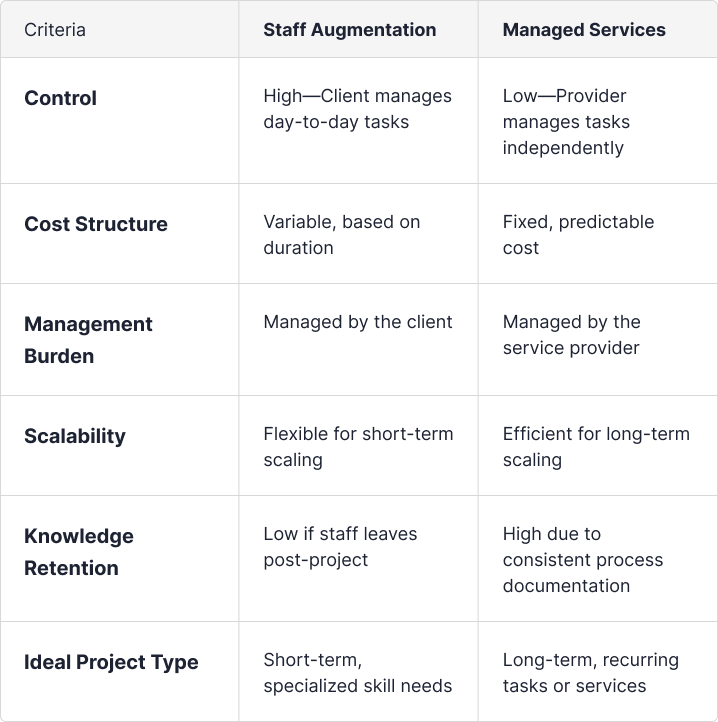Augmentation vs. Managed Services: Which Model is Right for Your Business?

In today’s competitive business landscape, finding the right staffing model is crucial for companies aiming to optimize productivity, control costs, and gain a strategic edge. Staff augmentation and managed services are two popular outsourcing models, each offering distinct benefits and challenges. Choosing between these models depends on factors like the scope of the project, available resources, and the desired level of control. Below, we’ll explore what each model entails, the pros and cons, and real-life use cases to help determine the best fit for your organization.

What is Staff Augmentation?
Staff augmentation is an outsourcing model where companies add skilled professionals to their existing teams to fill skill gaps or address temporary needs. These staff members are typically employed by a third-party provider but work under the client’s management, following its processes, workflows, and culture.
Pros of Staff Augmentation
Cons of Staff Augmentation
Use Cases for Staff Augmentation
- IT Projects: A software development company might need extra developers with specific programming skills for a six-month app development project. Staff augmentation allows the company to bring on specialized talent without committing to long-term employment.
- Seasonal Demand: Retail companies may use staff augmentation during peak shopping seasons to meet temporary demand without hiring permanent staff.
A retail company needs a team of e-commerce developers to launch a new website for the holiday season. Using staff augmentation,
the company can hire temporary developers with the necessary expertise without committing to permanent hires.
What are Managed Services?
Managed services involve outsourcing the entire management and execution of a specific function or process to an external provider. The service provider is responsible for delivering agreed-upon results, allowing the client to focus on core business activities while the provider handles the outsourced function.

Pros of Managed Services
Cons of Managed Services
Use Cases for Managed Services
- IT Infrastructure Management: A company can outsource IT management, including network monitoring, cybersecurity, and data backup, to a managed service provider, freeing its internal team to focus on strategic initiatives.
- Customer Support: Managed services for customer support can provide businesses with 24/7 support, enhancing customer satisfaction without adding significant internal resources.
A healthcare company might outsource its IT infrastructure to a managed service provider to ensure data security and compliance without overburdening its in-house IT team.
Maximize productivity of your business
Track employee productivity and simplify work with them
Comparing Staff Augmentation and Managed Services

Conclusion
Choosing between staff augmentation and managed services depends on your business goals, budget, and control preferences. If you need specific expertise and want to oversee the project directly, staff augmentation may be the better choice. For companies seeking streamlined operations and expertise without daily oversight, managed services are often a more efficient and cost-effective option. Many businesses find that a hybrid approach best meets their needs, using staff augmentation for specialized tasks and managed services for ongoing support. By understanding the benefits, drawbacks, and use cases for each, companies can make informed decisions that align with their strategic objectives.
– The Monitask Team
Frequently Asked Questions
What are the risks of managed services?
Managed services can limit the client’s control over processes and introduce dependencies on the provider’s reliability. Any disruptions in the provider’s operations may impact the client’s business continuity.
How do the costs of staff augmentation compare to managed services?
Staff augmentation costs are generally variable, depending on the duration and skill level of staff needed. Managed services typically have fixed costs, which make budgeting easier but can require longer commitments.
Can both models be used simultaneously?
Yes, companies can use both models together. For example, they may use staff augmentation for specialized, short-term projects while relying on managed services for ongoing, operational tasks like IT management.



